Leon Marvell is the head of the film program at a public college here, he’s on the Burwood campus of Deakin University. He was able to get me grant money for the trip here, both to give a talk at a conference on media art, and to be a “Thinker in Residence” at Deakin for a week.
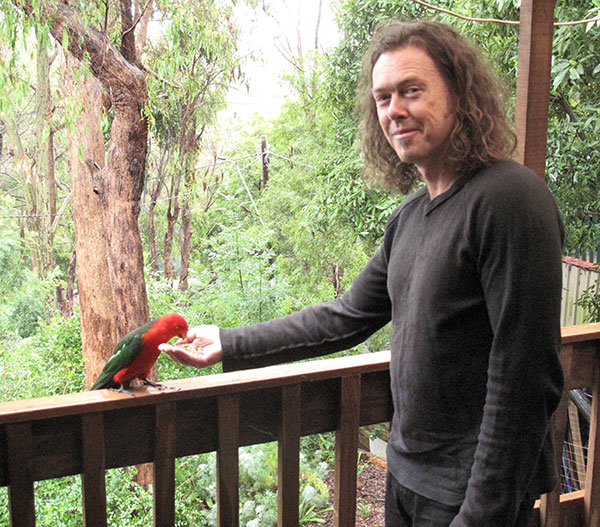
Here’s Leon with a wild parrot. Leon and his partner Yolande live in an area that’s slightly like the Santa Cruz mountains—there’s lots of eucalyptus trees, and tropical birds. They drive on the left side of the road. The accent can be hard to understand.
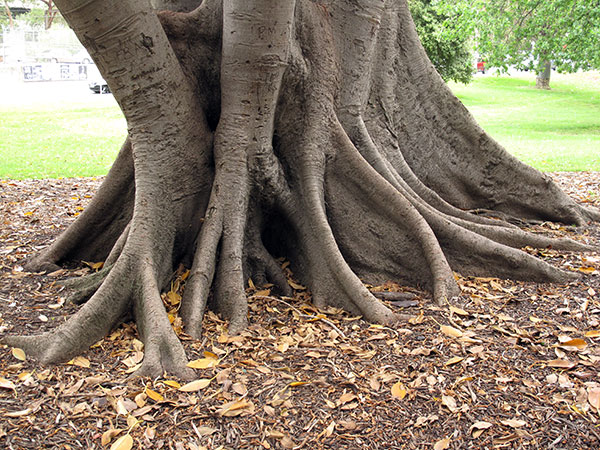
We stayed at their house for a couple of days. One day it rained all morning and we played Scrabble in Leon’s house. Leon and Yolande refrained from using unfamiliar Australian words on the board, but they did teach us a few.
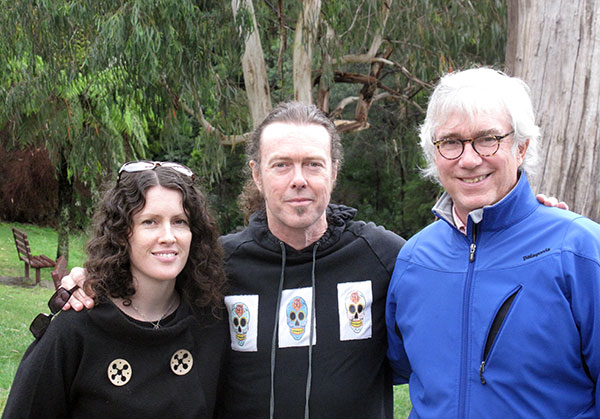
For instance a “pie floater” is a meat pie set into a bowl of green pea soup, with some bright red tomato sauce on top of the pie. When Leon was a boy in Adelaide, his grandfather would take him to town and the big treat would be a pie floater. Some people jokingly refer to the town as Addlebrain.
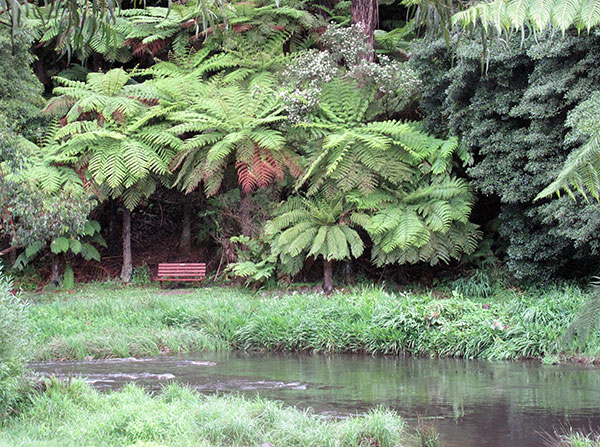
Saturday evening, Leon cooked us some kangaroo, which wasn’t bad, more or less like venison. I felt slightly guilty.
On Sunday, Leon and Yolande drove us deeper into the mountains into a rain forest, where we saw a really big kookaburra bird, the size of a chicken, in a tree. Sylvia saw a lyre bird with extravagant tail. We walked among tree ferns and saw the enormous “mountain ash” the size of a redwood. It’s actually a type of eucalyptus (they have about sixty different kinds of eucalypts here) with peeling bark and pocked with clumps of moss.
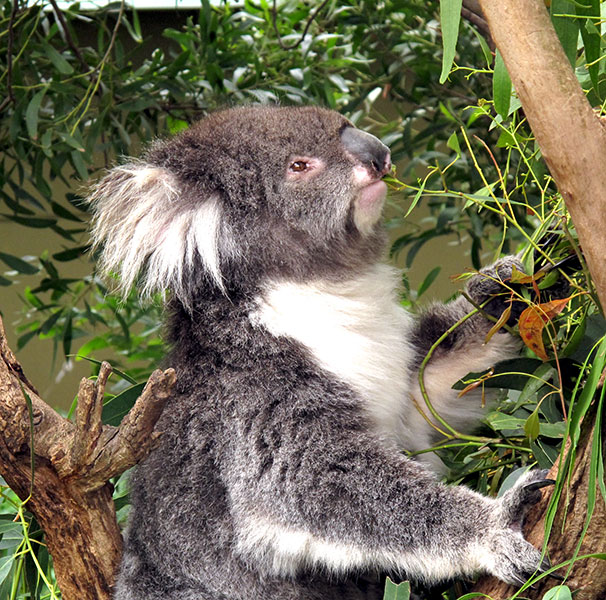
On Monday, they took us to a kind of zoo near their house, and we saw all the canonical Australian animals: kangaroo, lyre bird, koala, echidna, and the platypus.
The koalas don’t actually look like bears at all. In fact they look more like Mao Tse Tung.
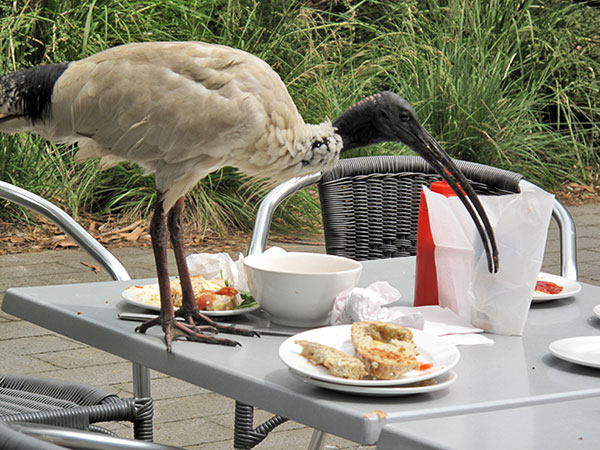
We had lunch in the cafe there, and the ibis birds were all over the table. I’d always thought ibises were Egyptian, but they’re all over Australia, getting down and competing with the pigeons, even though they’re supposed to be sacred birds (cf. Thoth, the divine scribe, with the ibis head).
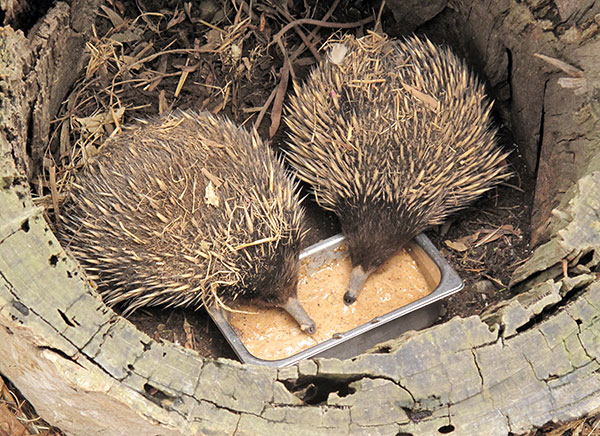
We saw some echidnas, who are hedgehog like monotreme mammal critters who, like the platypus, lay eggs and nurse their pups.

The platypuses were great, a male and a female, in separate tanks, very large tanks, dimly lit to simulate night, with leafy branches and rocks and worms and fresh-water shrimp that the Ozzies call “yabbbies.” The furry little platypuses swam around a lot. They close their eyes, nostrils and ear-holes under water, and find their way by using their soft, electrosensitive bills. Truly a sixth sense. The bills pick up the oscillating electrical fields of living objects in particular, although I suppose there might be some fields coming off inanimate objects as well. What a great way to perceive the world.
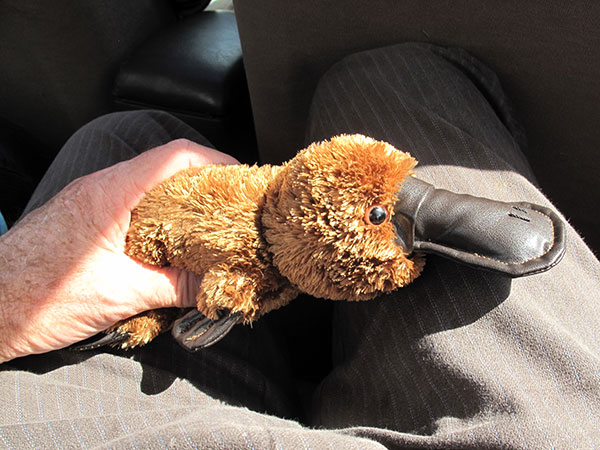
It was too dark in the zoo to get a picture of the platypuses, but Leon kindly gave me a stuffed one to treasure. Leon claims a baby platypus is called a “puggle.”
Yolande’s mother and brother are taking part in a platypus-counting program in Adelaide—each person goes out at night and tries to spot one in a certain area. As things stand, platypuses are so retiring that nobody knows how many of them there are.
I’m imagining an SF story where someone gets a platypus bill implant—and how they then see the world. They can sense sexual partners, or a wad of money, or drugs.
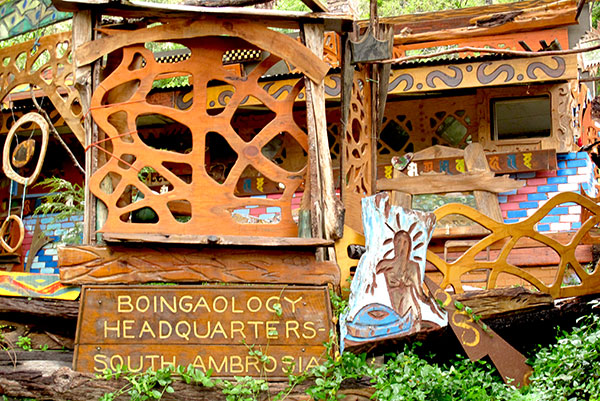
On a drive near Warburton, Leon showed us the rambling self-built house of “Boinga Bob,” which the owner terms a center of Boingaology.
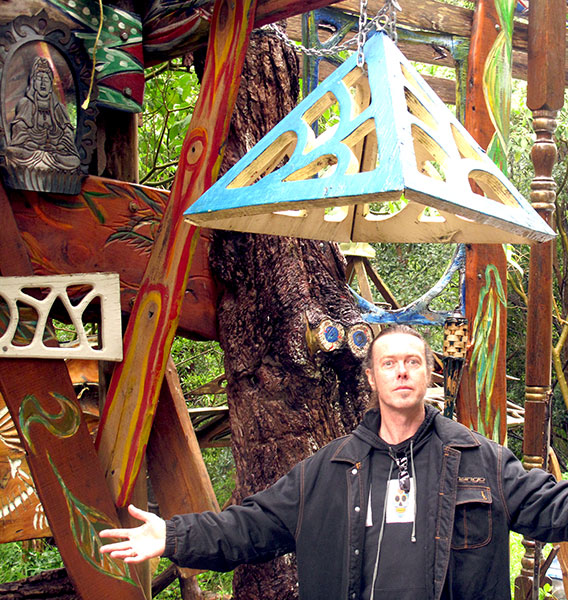
Right on, Leon, and thanks for everything!









December 14th, 2009 at 11:24 am
Wow cool trip! I am a puggle too!
December 17th, 2009 at 9:38 am
Enjoyed this blog! & hope you enjoyed your stay in Melbourne. My platypus count total is up to the majestic amount of, 2. I’ve been stuck on this number for a few weeks and wondering how to get to, 3. I really enjoyed White Light – thanks, and I’m trying to decide what to read next…
October 14th, 2010 at 1:39 pm
Boinga Bob is a dear friend of mine. He lives opposite me, accross the valley. You can find his extraordinary life story at: http://www.boingabob.com